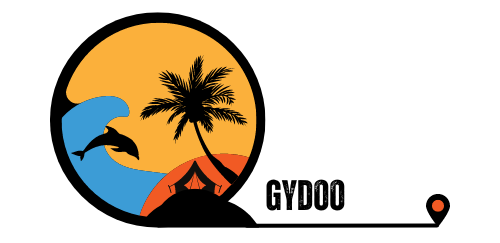By Paramvir for Gyddo
Walking along the 19-kilometer ring road that encircles Nauru, you quickly realize this isn’t your typical Pacific paradise. As the world’s third-smallest country by area, this single-island nation tells a compelling story of boom, bust, and the ongoing struggle to find its footing in the modern world.
First Impressions
Landing in Nauru feels different from other Pacific nations. The runway, taking up a significant portion of this 21-square-kilometer island, sees just 1-2 flights weekly. My first task was securing transportation, and I managed to rent a car for 70 AUD per day from a local provider – though they warned me there’s no insurance in Nauru, so careful driving is essential.
Daily Life and Infrastructure
The country’s infrastructure tells its own story. The only functional hotels – Menen Hotel and Eva Lodge – charge around 200-250 AUD per night. While exploring, I discovered several abandoned hotels, their empty corridors telling tales of more prosperous times.
What struck me most was the unique rhythm of daily life. The Republic of Nauru hospital, the nation’s only medical facility, operates just three hours daily – morning, noon, and evening. It’s a basic but clean facility, funded by Australian aid, housed in pre-fabricated containers shipped from Australia.
The Chinese Influence
One surprising aspect is the significant Chinese presence. Of Nauru’s roughly 11,000 residents, while 60% are Nauruan, there’s a notable Chinese community running many local businesses. You’ll find Chinese shops every few kilometers, each typically featuring a petrol pump and Digicel top-up services. The island boasts over 150 Chinese restaurants, offering similar menus to those I encountered in other Pacific nations.
The Phosphate Legacy
Standing at the now-rusting phosphate shiplines, you can’t help but reflect on Nauru’s dramatic economic journey. In the 1970s and 80s, phosphate mining made Nauru the world’s second-richest nation per capita, behind only Saudi Arabia. Today, those mines are exhausted, leaving behind a hollow interior and contaminated groundwater.
The environmental impact is stark – 90% of the land is unfit for agriculture, forcing reliance on imported processed foods. This dietary shift, combined with changing lifestyles, has contributed to significant health challenges among the population.
Hidden Dangers and Practical Challenges
The beautiful but treacherous coastline hides dangerous rip currents. Local knowledge is essential, as these currents have claimed many lives. The sharp coral reefs that ring the island make it impossible for large ships to dock directly.
Modern connectivity comes at a premium – mobile calls cost about 20 INR (0.30 AUD) per minute, and internet access is notably expensive at 300 INR (4.70 AUD) for just 150 MB of data.
Tourism Reality
Despite its unique story, Nauru remains one of the world’s least visited countries, receiving perhaps 100-200 tourists annually. This isn’t entirely by accident – there seems to be limited government interest in developing tourism infrastructure. The focus appears to be on other forms of foreign engagement, particularly in terms of business and development partnerships.
Cultural Insights
What many don’t realize is that Nauru is a matrilineal society, where property and lineage pass through the mother’s line. The culture puts significant emphasis on sports, particularly rugby and weightlifting. Basketball courts dot the landscape, though I rarely saw them in use during my visit.
Reflections
Despite the challenges and negative narratives often associated with Nauru, my experience revealed a more nuanced reality. The local people were welcoming, and the country, while struggling with its past decisions, continues to adapt and survive. It’s a place that deserves to be understood beyond its headlines – not as a cautionary tale, but as a community working to write its next chapter.
Whether Nauru can transform its challenges into opportunities remains to be seen, but for the curious traveler, it offers a unique window into the complexities of island nation development and the ongoing impact of colonial resource exploitation in the Pacific.


